A hidden source of emissions while we've been stuck inside: your home cooking - Fast Company |
- A hidden source of emissions while we've been stuck inside: your home cooking - Fast Company
- Time to Get Cooking - The New York Times
- Sorry, air frying isn’t always healthier than other ways of cooking - The Mercury News
- Valerie Bertinelli makes healthy cooking easy with these sheet-pan dinners - TODAY
- Kitchen Social offers healthy cooking classes - wyomingnewsnow.tv
|
A hidden source of emissions while we've been stuck inside: your home cooking - Fast Company Posted: 04 Jan 2021 03:00 AM PST 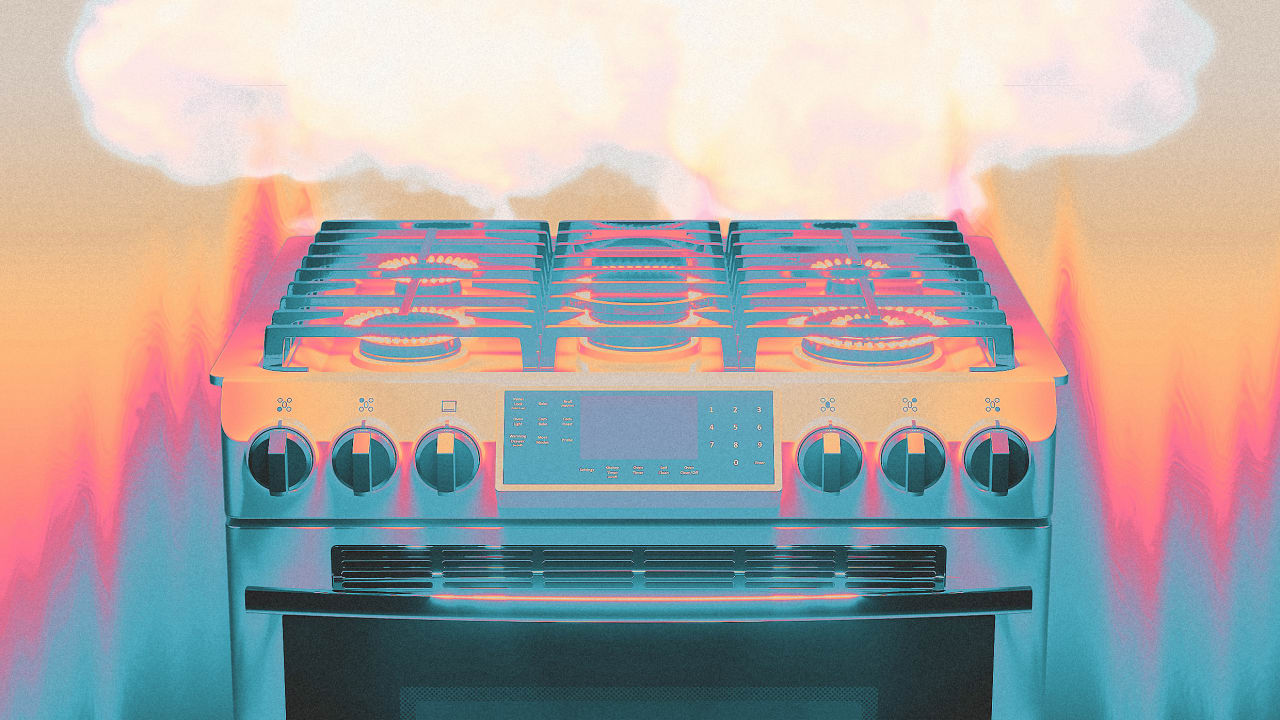 When Alex Huffman, an aerosol scientist and associate professor at the University of Denver, recently outfitted his house with CO2 monitors—part of a home experiment to see how well different spaces were ventilated—he found out his home was pretty tightly sealed against the outside air, but carbon dioxide exhaled from his family would build up a bit as they lived their lives. There was a bigger surprise, though: When they cooked, the CO2 levels skyrocketed—not only in the kitchen, but throughout the house. "I was amazed to see how high the CO2 went," Huffman says, noting that his home has no externally venting fan. "The CO2 built up very quickly and stayed high. As long as we didn't open the windows, it stayed high for hours." Huffman was monitoring CO2 not out of environmental or health concerns, but as a proxy for COVID-19 transmission. When we breathe, we exhale both CO2 and aerosol droplets, so the concentration of CO2 in a space can give you an idea of how many aerosols, which may contain COVID-19, have built up. But CO2 is also a pollutant, and the readings he got when cooking show how polluting the activity is. Cooking emissions also contain small particles known as PM2.5 (particulate matter smaller than 2.5 micrometers). These particles, which are also prevalent in wildfire smoke, can penetrate into our lungs and even enter our bloodstream. They can make asthma more severe, worsen chronic lung conditions such as COPD and emphysema, and there's also evidence these particles can increase heart attacks, strokes, and lead to premature deaths. High CO2 levels cause health effects too, such as rapid heart rate, headaches, fatigue, dizziness, and nausea. The burning natural gas in gas stoves also produces amounts of nitrogen dioxide, another potent pollutant. In London, cooking emissions account for 10% of particulate pollution. In megacities like China, that share can go up to 22%. A recent study out of the University of Birmingham found that these emissions remain in the atmosphere for up to several days—not breaking up and dispersing sooner like previously thought—contributing to poor air quality and impacting human health. "If these particles have longer residence times in the atmosphere, they will travel further and affect air quality in a wider area over a longer period of time," says Christian Pfrang, a researcher at the University of Birmingham who worked on that study, over email. Cooking emissions don't only affect the outside air; they can also hang around inside. "These cooking emissions will have longer residence times wherever they are—so if homes are poorly ventilated, this will significantly impact on indoor air quality in particular in the kitchen/dining area," Pfrang says. With COVID-19 lockdowns forcing people inside their homes more, and maybe spurring them to cook at home more often, this means people could be exposed to much higher levels of indoor air pollution than usual. Just how much more, though, is hard to say. There's still a lot we don't know about our indoor air, and its effects. Does this added indoor pollution mean we've been exposed to more CO2 than when we could be in any other year, when we go outside more often and commute to work? It really depends on what your living space is like, how much you cook, where you live, and how much pollution you're normally exposed to, says Delphine Farmer, an associate professor of chemistry at Colorado State University who studies the air we breathe indoors. (Farmer is also one of the principal investigators with HOMEChem, a first-of-its-kind experiment into understanding the chemistry of our indoor air and the impacts of activities such as cooking and cleaning.) Still, even with those variables, she thinks there has certainly been "enhanced exposure" to these particular cooking emissions with people staying inside. Your specific exposure depends on a few factors. Huffman notes he has a gas stove, which is particularly polluting. With that flame, gas stoves put out both gases and pollutant particles. Emissions from electric stoves are "likely to be negligible," Pfrang says, though the cooking done on them can produce its own emissions. And different types of cooking produce different levels of emissions. Any time you fry or sauté with oil in a pan, you're going to generate "a large portion of particles," Farmer says. Any time you toast, "it's like a miniature smoldering forest fire." Things like boiling and making rice produce less pollutants. When roasting, though, "when you can smell those really strong roasted scents," Farmer says, "you're certainly releasing a large number of gases and particles." It also depends on how well ventilated your home is. "Historically in America we have really focused on sealing houses well. We've been kind of afraid of the outside air," Huffman says. "But what we've done is trap all of that into the breathing space where we spend most of our time, so it doesn't go away very quickly, whatever it is that you've produced." Older homes may be leakier—which is bad for your heating bill and energy efficiency, Farmer notes, but good for flushing out indoor air pollutants. Newer homes built for high energy-efficient standards will have worse ventilation. It's not always good to bring the outside air in to flush out cooking pollutants, either. For those in the West who dealt with forest fires this year, opening windows to clear out cooking emissions would have been worse than keeping them shut to keep out the smoke. Ultimately, there's still a lot we don't know about indoor air and how it affects us—but we're learning. There's been a newfound interest in indoor-air research, especially because of how much time we're spending indoors. Farmer thinks in the next few years we'll have a better understanding of how short-term exposure to high emissions levels from cooking compares to long-term exposure to outdoor pollution such as smog. Even if we don't know if indoor pollutants are as harmful, Farmer says she believes in the precautionary principle: "If there are simple things that you can do to avoid potential exposure, then I believe in doing them," she says. "And they really are very simple." She suggests cracking open a window when you're cooking, getting into the habit of turning on your kitchen hood vent, and utilizing outdoor-air vents in your house, even if it's the one in your bathroom. Farmer also recommends everyone get a simple, cheap air purifier, one with just a filter and a fan. (Avoid the fancier ones with UV light or ozone ions, which can actually make air worse, she says.) And don't only use these tools when you've burnt your toast or attempted to flambé. "Everyone has something that they do in their kitchen, either you run and you turn on a bathroom fan or you crack open a window or you turn on an air purifier. . . . Whatever you do when you smell that burnt toast or the overdone stir-fry, that's what you should be doing all the time when you cook," Farmer says. "While you might not be smelling the smoke and the air pollutants, they're certainly there." |
|
Time to Get Cooking - The New York Times Posted: 04 Jan 2021 07:30 AM PST  Good morning. Welcome back. It's been two weeks of people pushing off meetings and decisions, treading water in the corporate pool and the raging river of unemployment alike, nothing getting done although there's so much to do. Today marks the end of all that. It's go time for 2021. Time to get serious. Time to buckle down. I hope that won't diminish your cooking. Holiday ingredients still abound in many homes, and they can continue to offer joy even as time-eating responsibilities begin to ramp up and people start sweating again over objectives and key results, budgets or the search for work itself. For instance, I usually get a few loaves of panettone every Christmas season — from the market, from faraway friends, in the old days from house guests. I consume the first one pretty quickly — panettone makes for an ace breakfast treat on Christmas Day, and on following ones — but invariably one loaf gets left aside until it goes beyond its prime. Maybe that's you, too? If so, you might take a look this week at Tejal Rao's recipe for panettone bread pudding, which is her delicious hack of a recipe that the pastry chef Elisabeth Prueitt uses for brioche bread pudding at Tartine Bakery in San Francisco. I like it for dessert on a chilly evening, perhaps to follow this terrific yam and plantain curry with crispy shallots (above), or a wine-braised chicken with artichoke hearts. I'd love to cook this spicy slow-roasted salmon with cucumbers and feta this week. And this risotto with peas and sausage as well. But I get it if that's a little much in a week such as this one. You can follow Tejal in that case, too, doubling her recipe for eggs Kejriwal and calling it dinner and a fine one at that. Miso-glazed eggplant's a terrific meal to eat at the start of the week. So is this roasted butternut squash bread salad. Chile-oil noodles with cilantro? Root vegetable soup? Pressure cooker shrimp biryani? Oh, yes. There are thousands and thousands more recipes like that waiting for you on NYT Cooking. Go browse the site and apps, and see what you find. Then save the recipes you like. Rate the ones you've made. And you can leave notes on them, too, if you want to recall a particular hack or substitution. Keep those notes private, if you like, or share them publicly with your fellow subscribers. (Yes, you need to be a subscriber. Subscriptions are what allows NYT Cooking to continue. If you are able to do so, I hope you will subscribe to NYT Cooking today.) And please ask for help if you need it. Just like the ski patrol at a favorite mountain, we are out on the trails to help if you find yourself stuck in a recipe, or sideways with our technology. Just write us at cookingcare@nytimes.com. Someone will get back to you. |
|
Sorry, air frying isn’t always healthier than other ways of cooking - The Mercury News Posted: 04 Jan 2021 11:32 AM PST 
I love cooking fads almost as much as I love food fads. My shelves are cluttered with a fondue pot, George Foreman Grill, Crockpot and an Instant Pot. One of them might just have to find a new home now that the air fryer is here. Is "air frying" healthy, or does it belong in the crock category, too? First off, frying food is unarguably one of the tastiest ways to eat anything. Broccoli, mushrooms, even Snickers taste great fried. However, for those of you looking for an argument against intelligent design, it just so happens that many of the tastiest things in our world are also the unhealthiest. Research has found that people who eat fried potatoes — French fries, hash browns, etc. — more than twice a week were more than twice as likely to die early compared to those who don't. The study didn't show causality, just a strong association. Most people eat fried foods from restaurants. Often restaurants use the unhealthier oils because it is easier to create fried foods with that satisfying crunch. Oil loads on calories. And restaurants tend to over-salt foods. The oil and salt combo is linked to heart disease, type II diabetes and high blood pressure. Another element of frying starchy food, particularly potatoes, is the creation of the chemical acrylamide. This is a known carcinogen created from the amino acid asparagine reacting with the sugars in the food. The darker the frying process makes the food, like that dark brown French fry, the more acrylamide in it. Until now, those were the best, tastiest ones. But is "air frying" even frying? Not exactly. It is more like a convection oven in which really hot air is blown by a fan around the food. The hot air gets the outside to get crispy while the inside stays soft (the perfect French fry). The food sits on a slightly elevated rack within the fryer, so that air can get to all sides and that grease can drop away from the food to the bottom of the pan. It sounds healthier to have fat drip away from the food instead of having the food swim in it. Oil is often lightly coated onto food before air frying. Using healthier oils and a lot less is estimated to cut calories by 70% to 80% when compared with traditional fried foods. A quarter-pound piece of chicken deep-fried will have more than 13 grams of fat in it, whereas that same piece of chicken cooked in an air fryer will have less than 1 gram. The question is, do owners of air fryers reduce their consumption of fried food from restaurants, or are they augmenting their weekly fried food intake by now making a lower-calorie version at home? One study shows that air frying reduces the amount of acrylamide compared to traditional frying. Another study looked at air-fried fish and found that air frying compared to other forms of cooking raised the levels of cholesterol oxidation products. These chemicals are associated with heart disease and cancer. Air frying lowers the omega-3 fatty acids in fish, too. This is the "good" fat in fish. For some foods, like meats, frying isn't healthy no matter what way you do it. The fried food purists will tell you that air frying doesn't give as satisfying as a crunch or feel. And health food purists will tell you that there are healthier ways to eat anything you might consider frying. It is important to think of air frying as the alternative to deep frying and not a healthy alternative to roasting or baking.If you're going to make room on your shelves for an air fryer, make sure that it is the deep fryer that takes a hike. Dr. Salvatore Iaquinta is a head and neck surgeon at Kaiser Permanente San Rafael and the author of "The Year They Tried To Kill Me." He takes you on the Highway to Health every fourth Monday. |
|
Valerie Bertinelli makes healthy cooking easy with these sheet-pan dinners - TODAY Posted: 04 Jan 2021 06:42 AM PST Cookbook author and television personality Valerie Bertinelli is joining TODAY to share a few of her favorite easy and healthy sheet-pan dishes. She shows us how to make tangy chicken with olives and tomatoes and baked salmon with fresh herbs and lemon — plus a bonus recipe for stuffed avocados made with the leftover salmon. 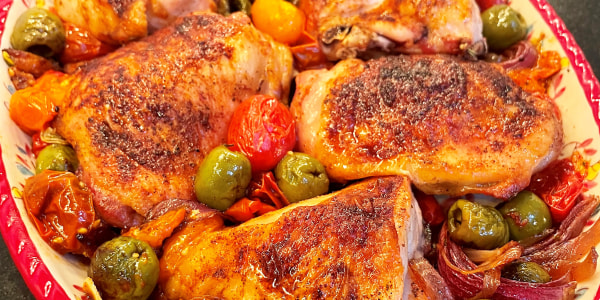 TODAY The sweet tomatoes beautifully balance the bracing acidity of the tangy sherry vinegar and briny olives in this easy chicken dinner. This recipe is so easy to throw together and has a bright pop of flavor in every bite. 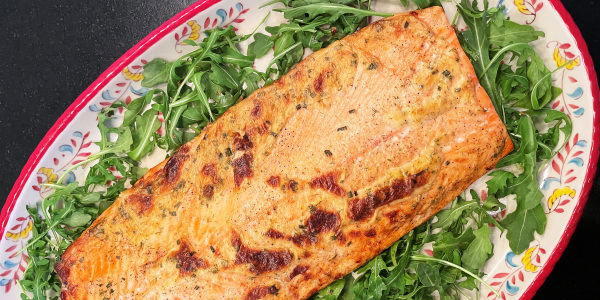 TODAY I love this recipe because it's so easy and flavorful. The fresh herbs and sophisticated flavors make it feel fancy, but the quick prep and cleanup make it easy enough for any weeknight. 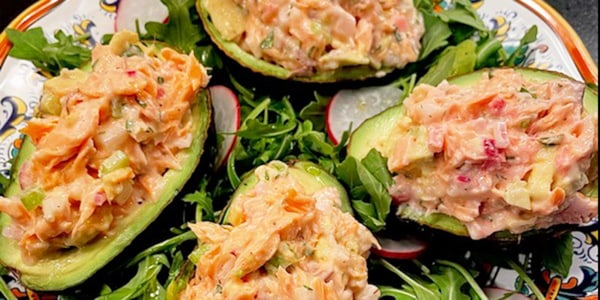 TODAY Avocados are one of my all-time favorite foods. This is such a fun recipe that makes the most of versatile avocados, plus it adds the delicious goodness of fresh salmon. Eating healthy never tasted so good! If you like those easy one-pan recipes, you should also try these:  Tina DeGraff 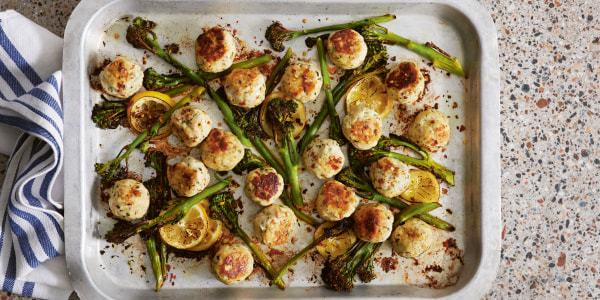 Patricia Niven |
|
Kitchen Social offers healthy cooking classes - wyomingnewsnow.tv Posted: 04 Jan 2021 04:56 PM PST  CASPER, Wyo. (Wyoming News Now) - It's a new year and a time to make resolutions. Popular New Year's resolutions are usually reading more, saving more money and losing weight. Kitchen Social is a local Casper business that can help people with a desire to eat healthier or cook more at home. It offers cooking classes that emphasize healthy eating. Karla Case, Kitchen Social's owner and a registered dietitian, said that her classes don't focus on weight or dieting. Her classes are cooking classes, but they're really more of nutrition classes. "I'm teaching people how to eat healthy through these classes," said Case. "We do some type of hands on cooking, so you'll learn how to eat healthy, and them you'll learn how to actually do it when you get home." One of the upcoming classes called "Real Food" emphasizes how to avoid processed foods. "We talk about reading the ingredient list, how to shop for healthy foods, how to read the nutrition label," said Case. "Really how to get away from highly processed foods and how to eat more of the whole, or real, foods." Kitchen Social has a variety of classes throughout January, and the first class of the month focuses on Instant Pot cooking on January 6th. For more information about Kitchen Social and its classes, check out their website here. Copyright 2021 Wyoming News Now. All rights reserved. |
| You are subscribed to email updates from "cooking" - Google News. To stop receiving these emails, you may unsubscribe now. |
Email delivery powered by Google |
| Google, 1600 Amphitheatre Parkway, Mountain View, CA 94043, United States | |
from What to Cook https://ift.tt/38fJyGb
